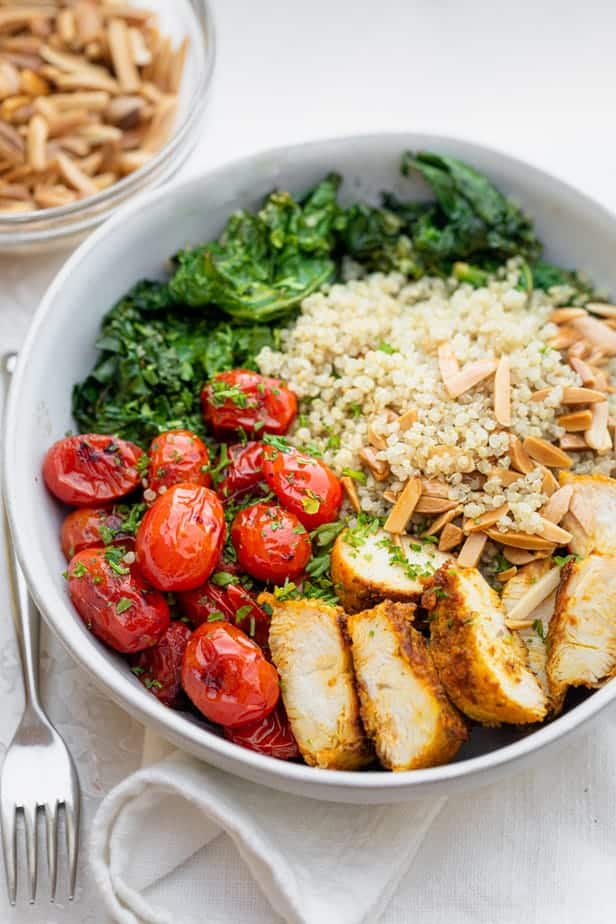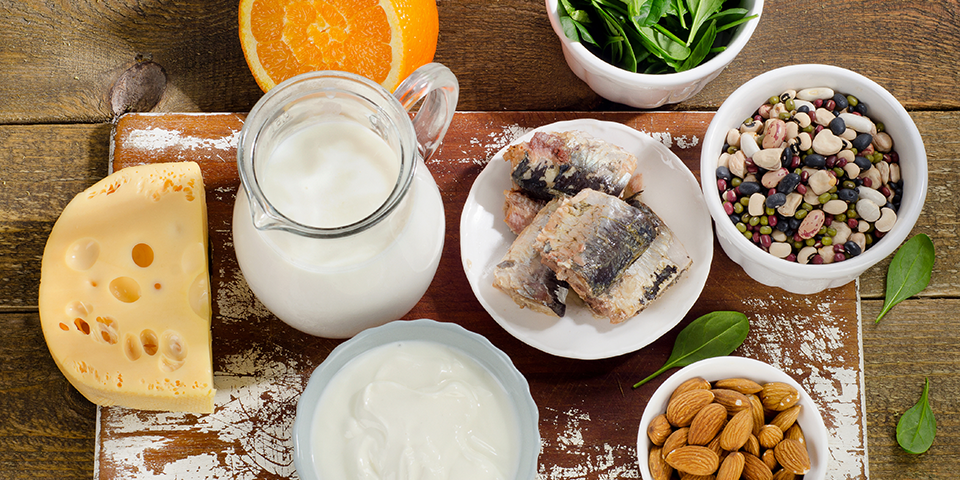Fueling Up for Gains: Tailoring Your Diet to Build Muscle
Building muscle requires dedication in the gym, but your diet plays an equally crucial role. The right combination of nutrients provides the building blocks and energy your body needs to repair and grow muscle tissue. But navigating the world of nutrition can be confusing, especially when considering gender and age-specific differences. This post will guide you through the dietary essentials for building muscle, tailored to men and women across different age groups.
Muscle-Building Macronutrients:
Before diving into specifics, let’s understand the three key macronutrients that play a starring role in muscle growth:
Protein: The undisputed champion for muscle building, protein provides the amino acids used to repair and build muscle tissue. Aim for 0.8-1 gram of protein per pound of body weight daily. Excellent sources include chicken, fish, eggs, beans, and dairy products. Carbohydrates: Fueling your workouts and providing energy, carbohydrates are essential. Choose complex carbs like whole grains, fruits, and vegetables over refined carbs like sugary drinks and processed foods. Healthy fats: Don’t fear fats! They contribute to hormone production, nutrient absorption, and satiety. Focus on healthy fats like avocados, nuts, seeds, and olive oil.
Men & Muscle:
Men typically have higher testosterone levels, facilitating muscle growth. However, their calorie needs are often higher due to larger body size and higher metabolic rates.
20-30s: Prioritize protein intake with every meal and snack. Aim for 1.2-1.6 grams of protein per pound of body weight. Include plenty of complex carbs to fuel workouts and healthy fats for hormone balance.
- Protein: Salmon with roasted sweet potato and asparagus for a post-workout meal. Greek yogurt with berries and granola for a quick protein-packed snack.
- Carbs: Oatmeal with nuts and seeds for sustained energy before training. Brown rice and quinoa with stir-fried vegetables for a balanced dinner.
- Healthy fats: Avocado on whole-wheat toast for breakfast. Grilled chicken breast with olive oil and herbs for lunch.
Dos:
- Prioritize protein with every meal and snack.

- Aim for 1.2-1.6 grams of protein per pound of body weight.
- Choose complex carbs over refined carbs.
- Include plenty of healthy fats.

- Stay hydrated with water throughout the day.
Don’ts:
- Skip meals or snacks.
- Rely on processed foods and sugary drinks.
- Neglect strength training.
- Overdo it on alcohol.
30-40s: Maintain a high protein intake while gradually adjusting calorie intake based on activity level and goals. Focus on nutrient-dense whole foods and incorporate strength training routines to maintain muscle mass.
- Protein: Tuna salad with whole-wheat crackers and spinach. Lentil soup with whole-grain bread for a hearty lunch.
- Carbs: Sweet potato fries baked with olive oil and spices. Whole-wheat pasta with lean ground turkey and marinara sauce.
- Healthy fats: Almonds and walnuts as a mid-morning snack. Salmon with roasted Brussels sprouts and balsamic glaze for dinner.
Dos:
- Maintain high protein intake.
- Adjust calorie intake based on activity level.
- Focus on nutrient-dense whole foods.
- Incorporate strength training regularly.
- Prioritize sleep and recovery.
Don’ts:
- Ignore changes in metabolism.
- Overlook the importance of rest and recovery.
- Let stress hinder your nutrition and training.
40s and beyond: Protein remains crucial, but focus on quality over quantity. Choose lean protein sources like fish and poultry and include plant-based proteins for added fiber and nutrients. Adjust calorie intake to manage weight and prioritize healthy fats for overall health.
- Protein: Skinless chicken breast with quinoa and steamed broccoli for a light and nutritious meal. Greek yogurt with protein powder and fruit for a filling snack.
- Carbs: Whole-wheat tortillas filled with grilled fish and black beans. Brown rice with lean meat and steamed vegetables for a balanced dinner.
- Healthy fats: Extra virgin olive oil drizzled on salads or vegetables. Fatty fish like tuna or salmon twice a week.
Dos:
- Choose lean protein sources.
- Include plant-based proteins for added fiber.
- Adjust calorie intake for weight management.
- Prioritize healthy fats for overall health.
- Focus on quality over quantity.
Don’ts:
- Neglect protein intake.
- Avoid strength training due to age.
- Underestimate the importance of hydration.
Women & Muscle:
Women naturally have lower testosterone levels but can still build significant muscle with proper training and diet.
20-30s: Aim for 0.8-1 gram of protein per pound of body weight. Include good sources of iron, like lean red meat and leafy greens, to support optimal training performance.
- Protein: Shrimp stir-fry with brown rice and mixed vegetables. Turkey burgers on whole-wheat buns with avocado and lettuce.
- Carbs: Whole-wheat toast with eggs and spinach for breakfast. Whole-grain crackers with hummus and vegetables for a snack.
- Healthy fats: Chia seeds pudding with berries and almond milk. Grilled chicken breast with sweet potato and roasted vegetables for dinner.
Dos:
- Aim for 0.8-1 gram of protein per pound of body weight.
- Include good sources of iron.
- Choose complex carbs for sustained energy.
- Incorporate healthy fats for hormone balance.
- Prioritize strength training.

Don’ts:
- Fear lifting weights.
- Undereat in an attempt to lose weight.
- Skip post-workout recovery meals.
30-40s: Maintain a balanced protein intake while adjusting calorie intake based on activity level and goals. Prioritize whole foods and focus on strength training to build and maintain muscle mass.
- Protein: Tofu scramble with bell peppers and onions. Black bean burgers on whole-wheat buns with sweet potato fries.
- Carbs: Quinoa salad with chickpeas, feta cheese, and chopped vegetables. Whole-wheat English muffin with peanut butter and sliced banana for a snack.
- Healthy fats: Sliced avocado on whole-wheat toast with a sprinkle of pumpkin seeds. Roasted chickpeas tossed with olive oil and spices for a snack.
Dos:
- Maintain balanced protein intake.
- Adjust calorie intake based on goals.
- Focus on whole foods and nutrient density.
- Prioritze strength training for muscle maintenance.
- Manage stress through exercise and healthy habits.
Don’ts:
- Neglect strength training due to busy schedules.
- Let stress sabotage healthy eating habits.
40s and beyond: Similar to men, prioritize quality protein sources and adjust calorie intake for weight management. Include healthy fats for hormone balance and bone health.
- Protein: Skinless chicken thighs baked with lemon and herbs. Lentil and kale soup with whole-grain bread for lunch.
- Carbs: Whole-wheat spaghetti with turkey meatballs and marinara sauce. Whole-wheat pita bread with hummus and chopped vegetables for a snack.
- Healthy fats: Nuts and seeds mixed with dried fruit for a trail mix. Grilled salmon with roasted asparagus and quinoa for dinner.
Dos:
- Choose quality protein sources.
- Adjust calorie intake for weight management.
- Include healthy fats for hormone balance and bone health.

- Focus on strength training for muscle preservation.
- Prioritize overall health and wellness.
Don’ts:
- Assume muscle building is impossible after a certain age.
- Ignore changes in metabolism and adjust nutrition accordingly.
- Neglect strength training and focus solely on cardio.
Remember:
These are general guidelines; individual needs may vary. Consult a registered dietitian or sports nutritionist for personalized recommendations. Stay hydrated! Water is essential for all bodily functions, including muscle recovery and growth. Listen to your body! Adjust your diet based on your training intensity, hunger cues, and progress. Building muscle takes time and consistency. Be patient, stay dedicated, and fuel your body for success!
Bonus Tip:
Consider protein supplements like whey or casein to help meet your protein needs, especially if you struggle to consume enough through food alone. Choose high-quality, reputable brands and consult a healthcare professional if you have any concerns.